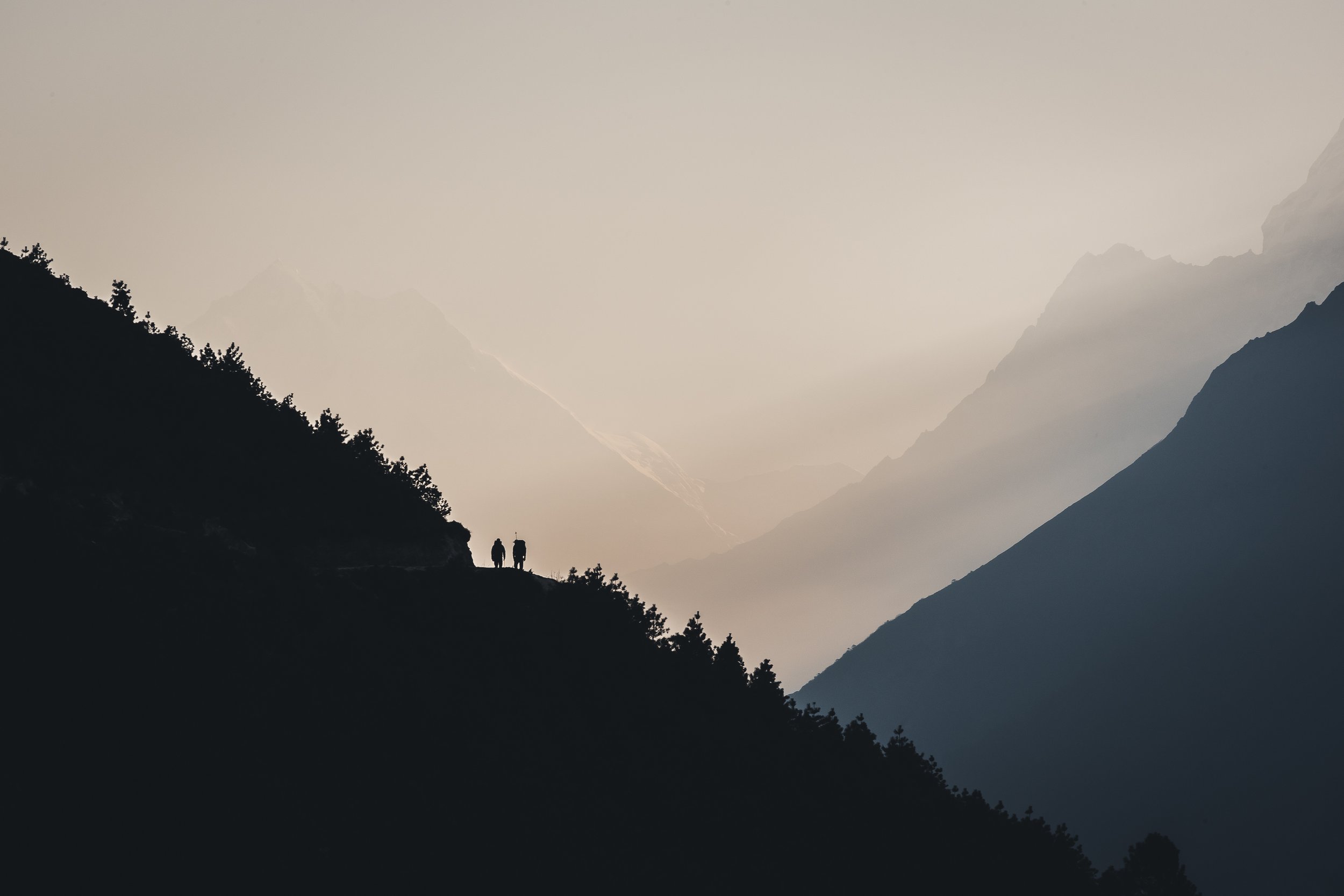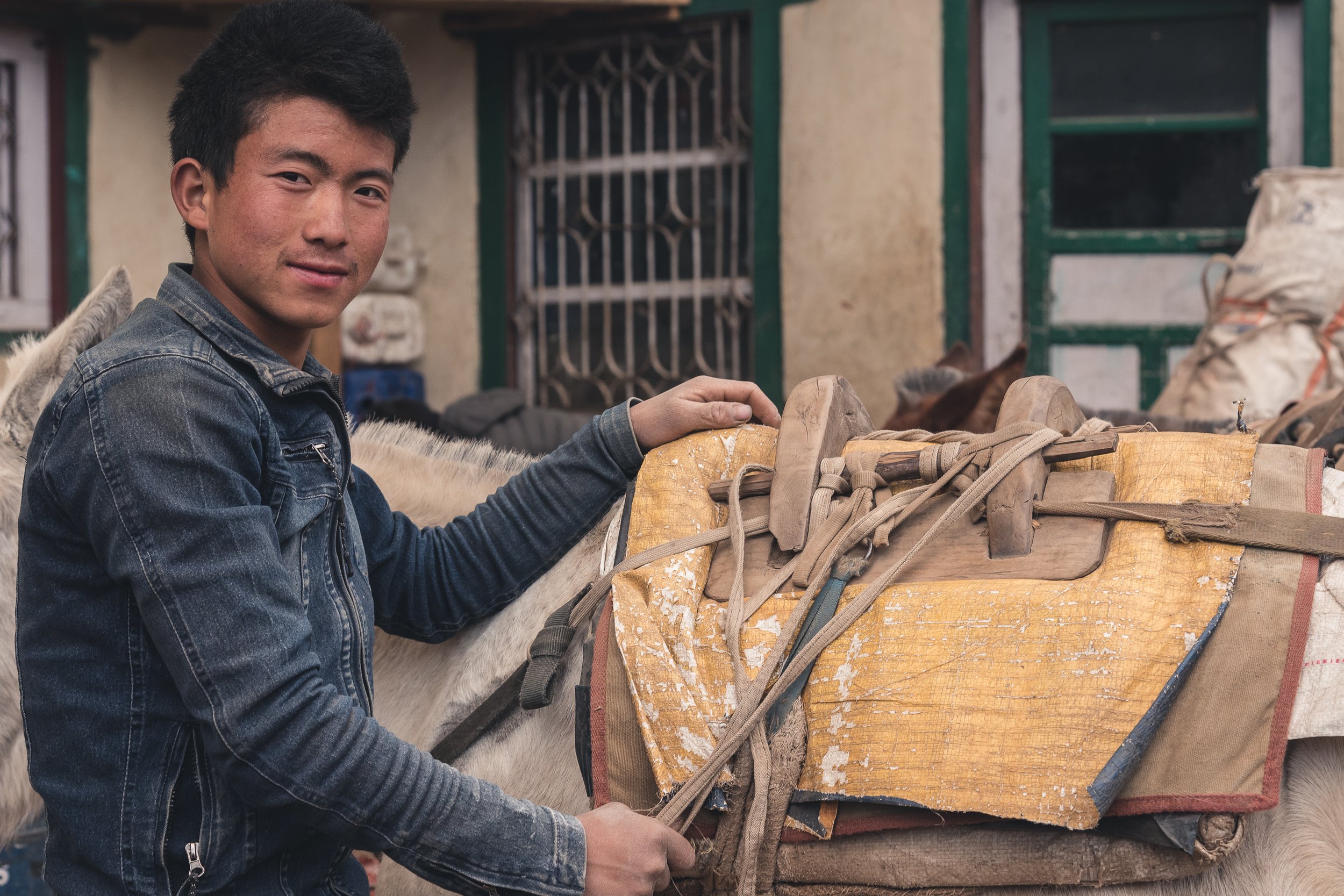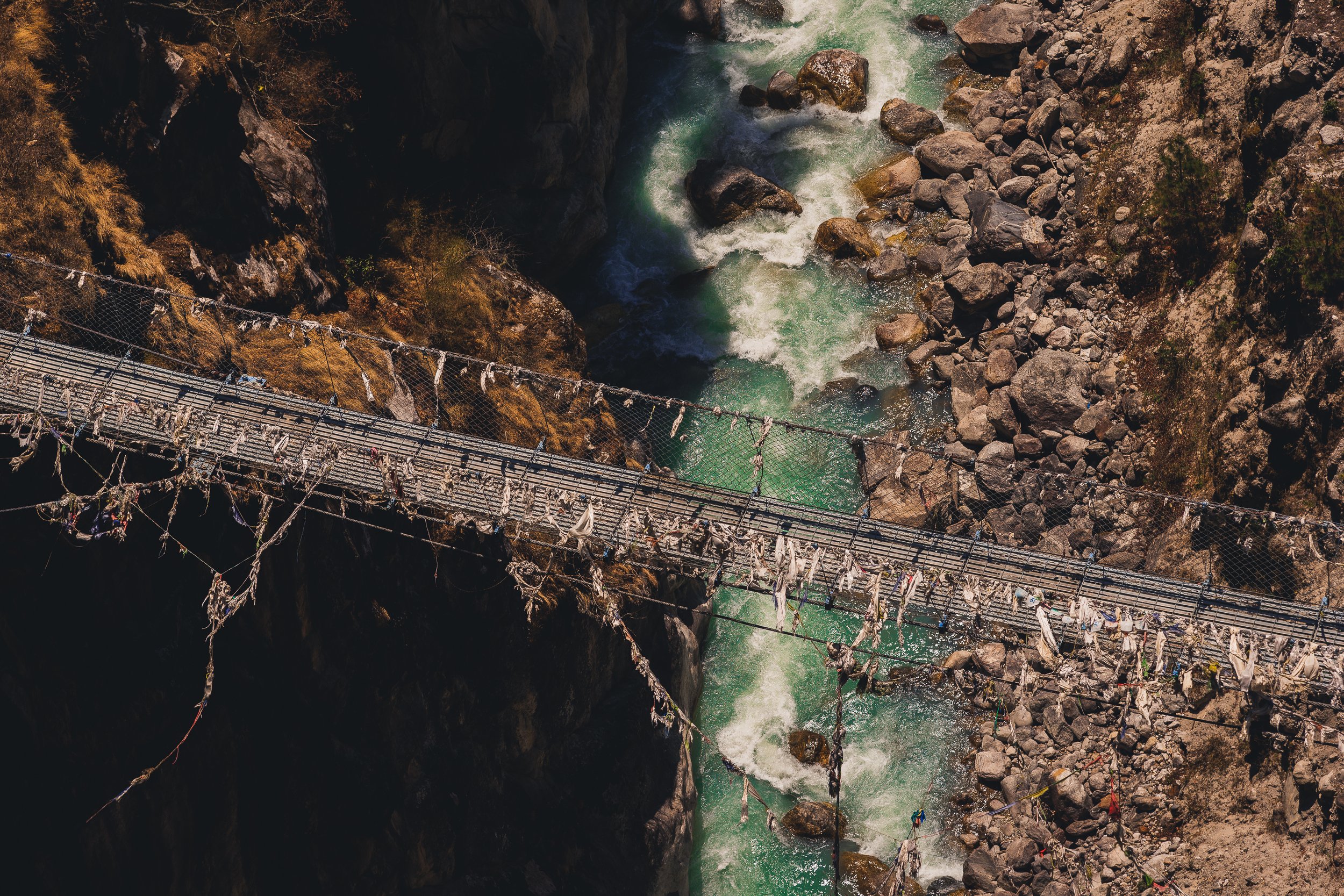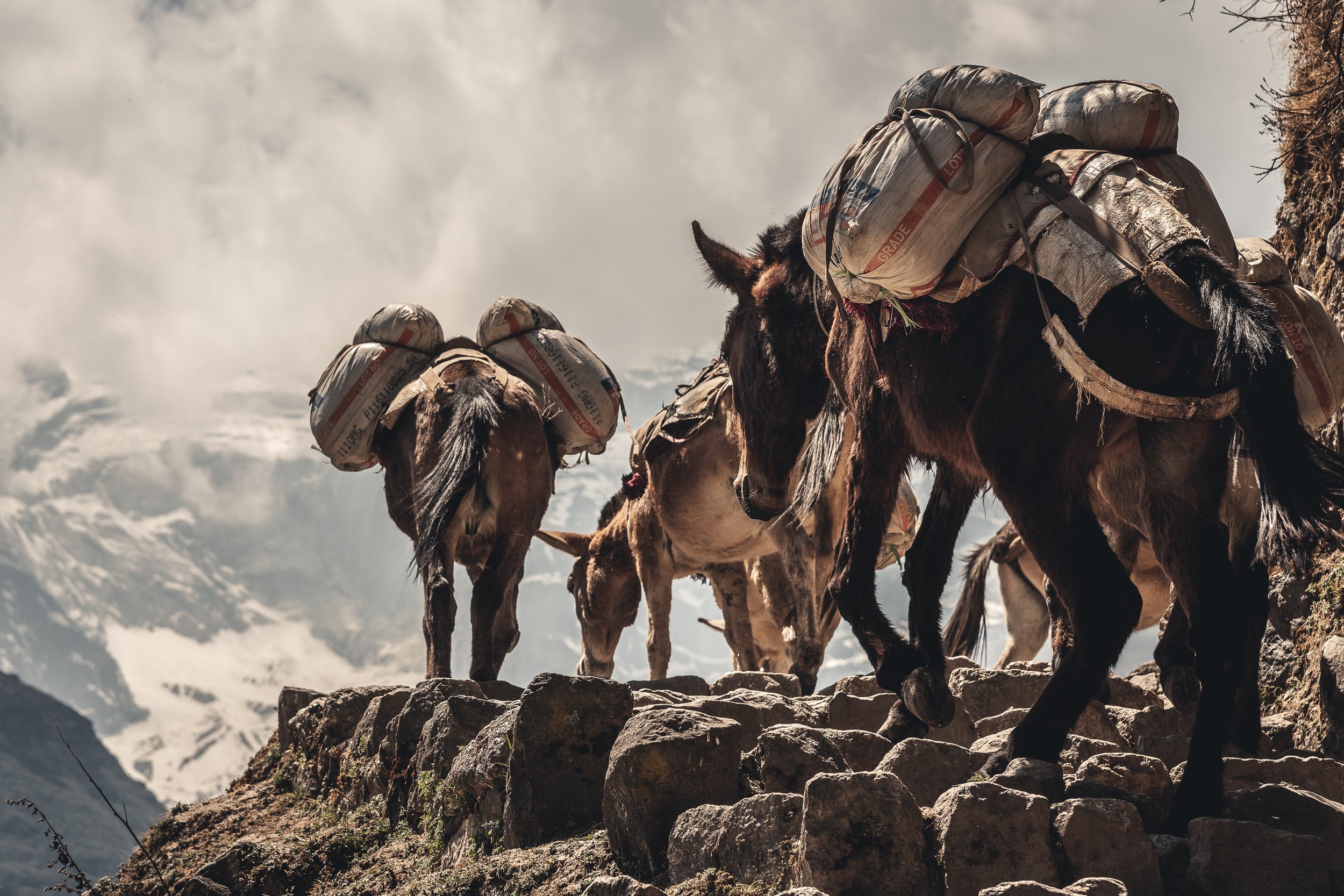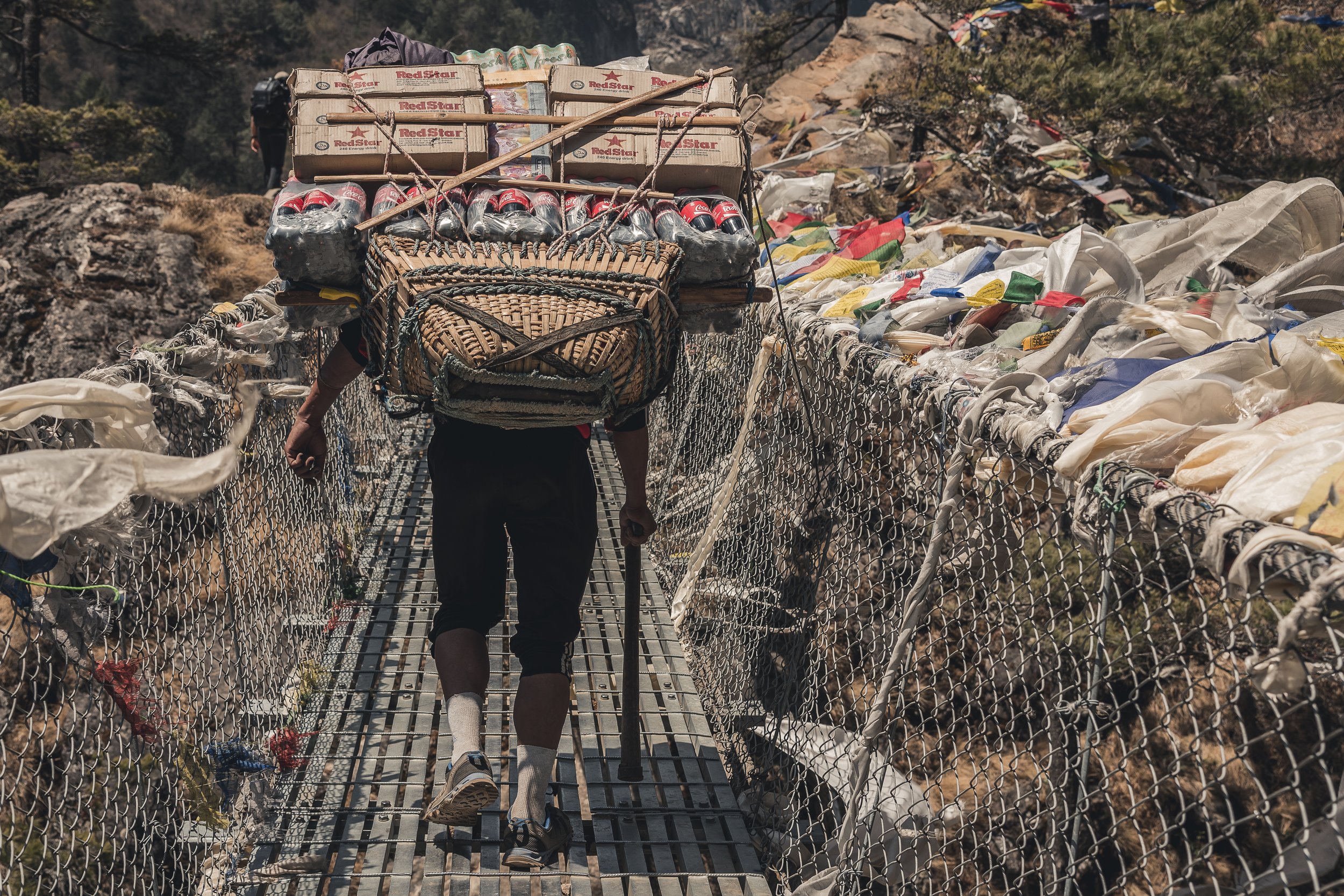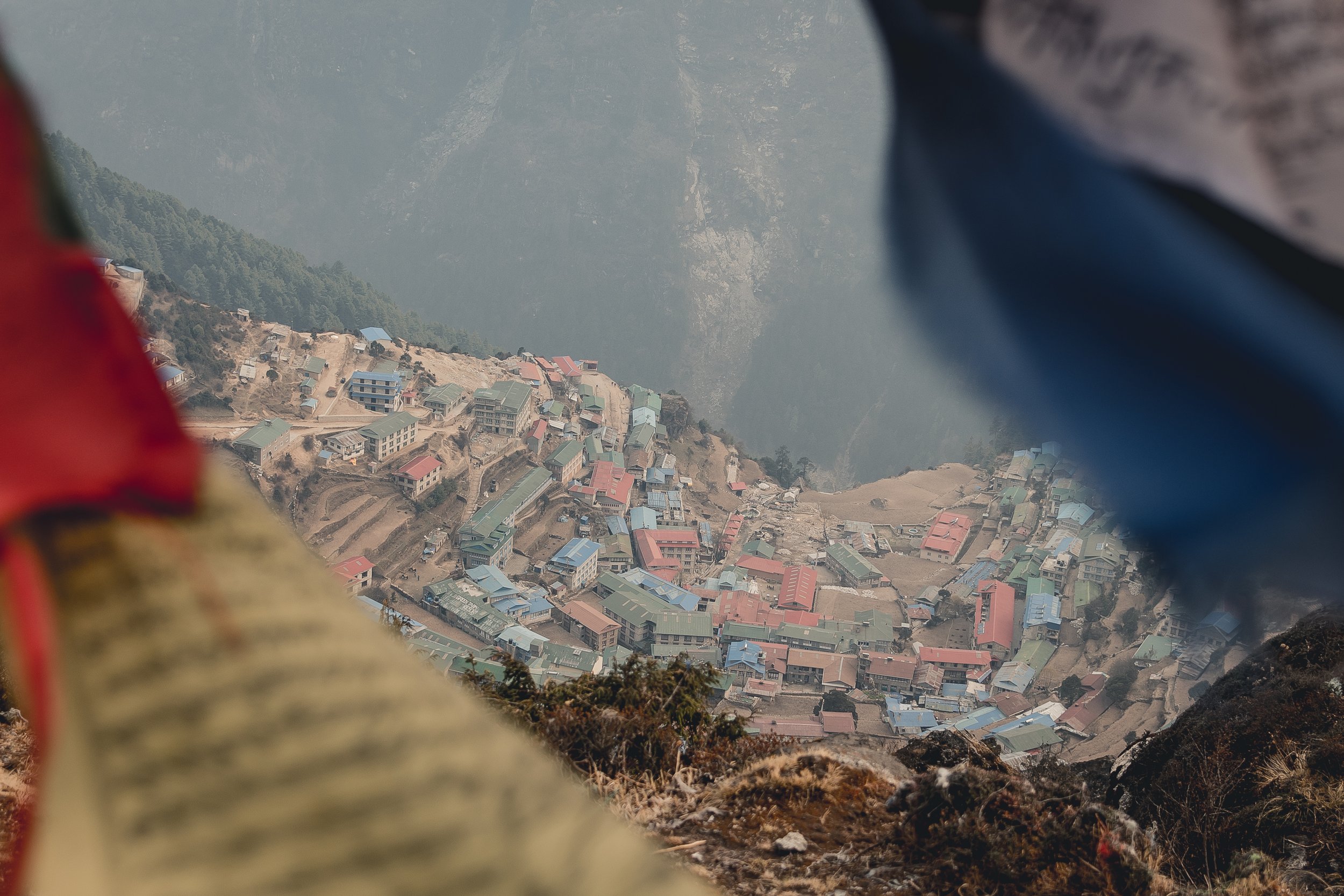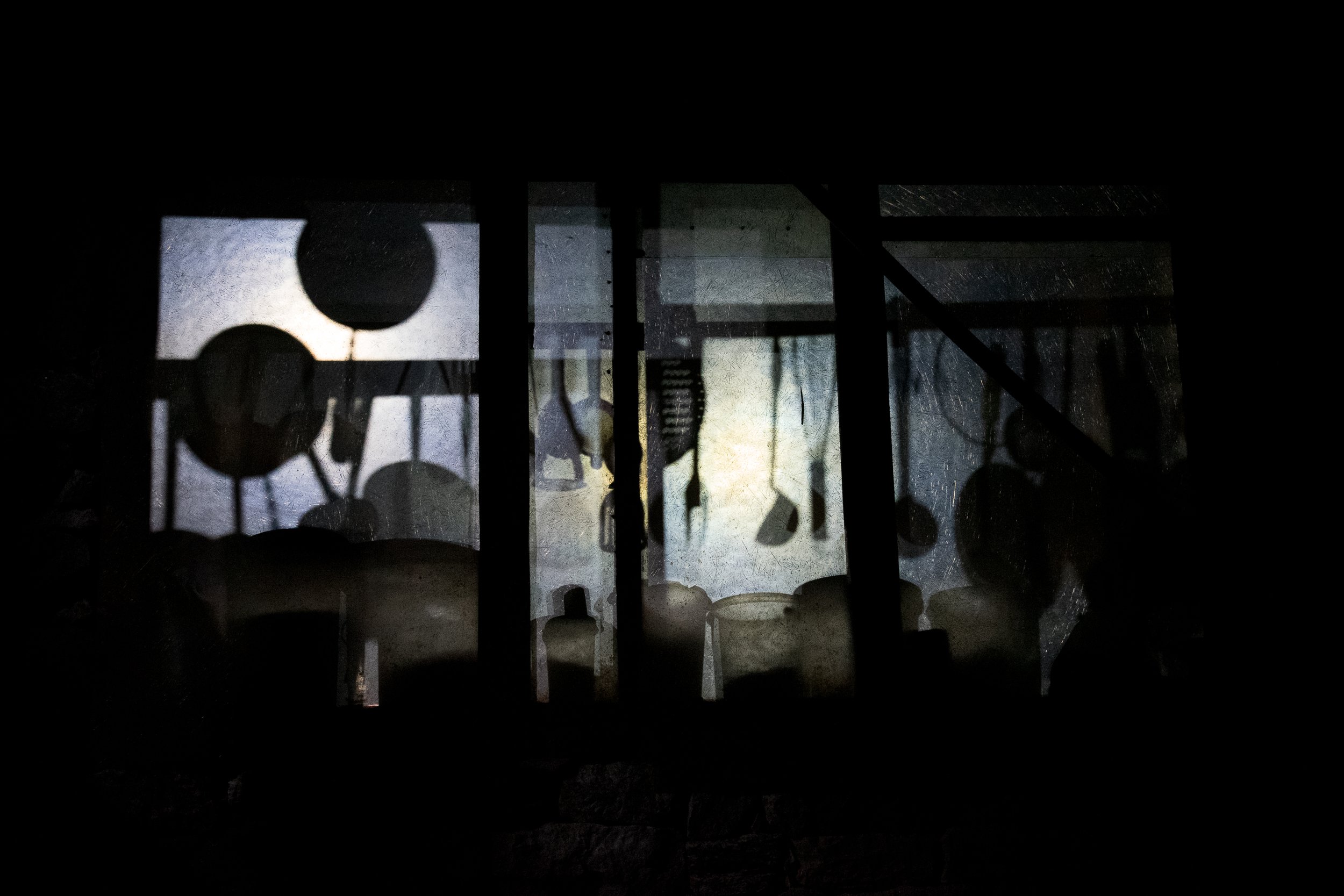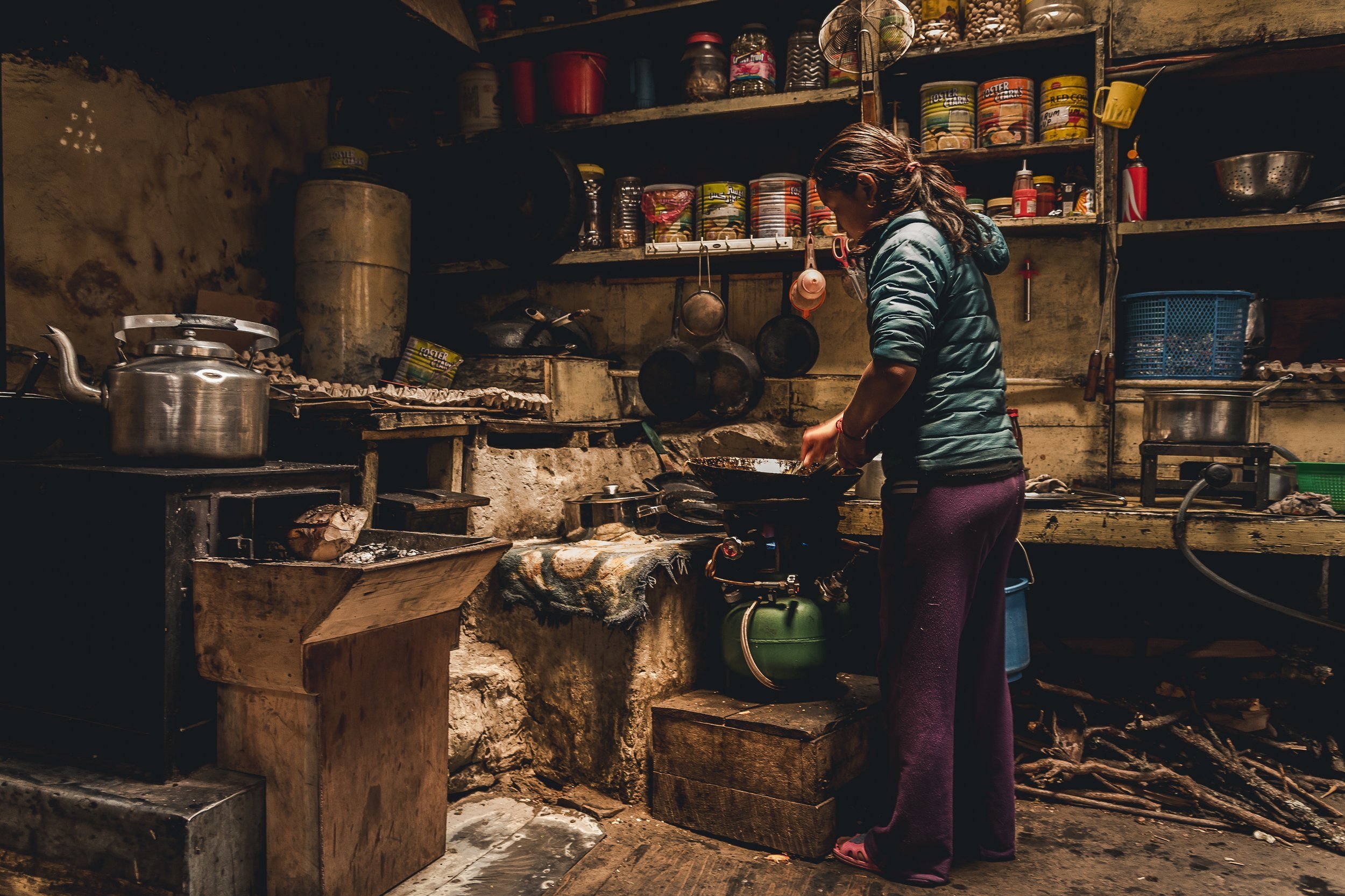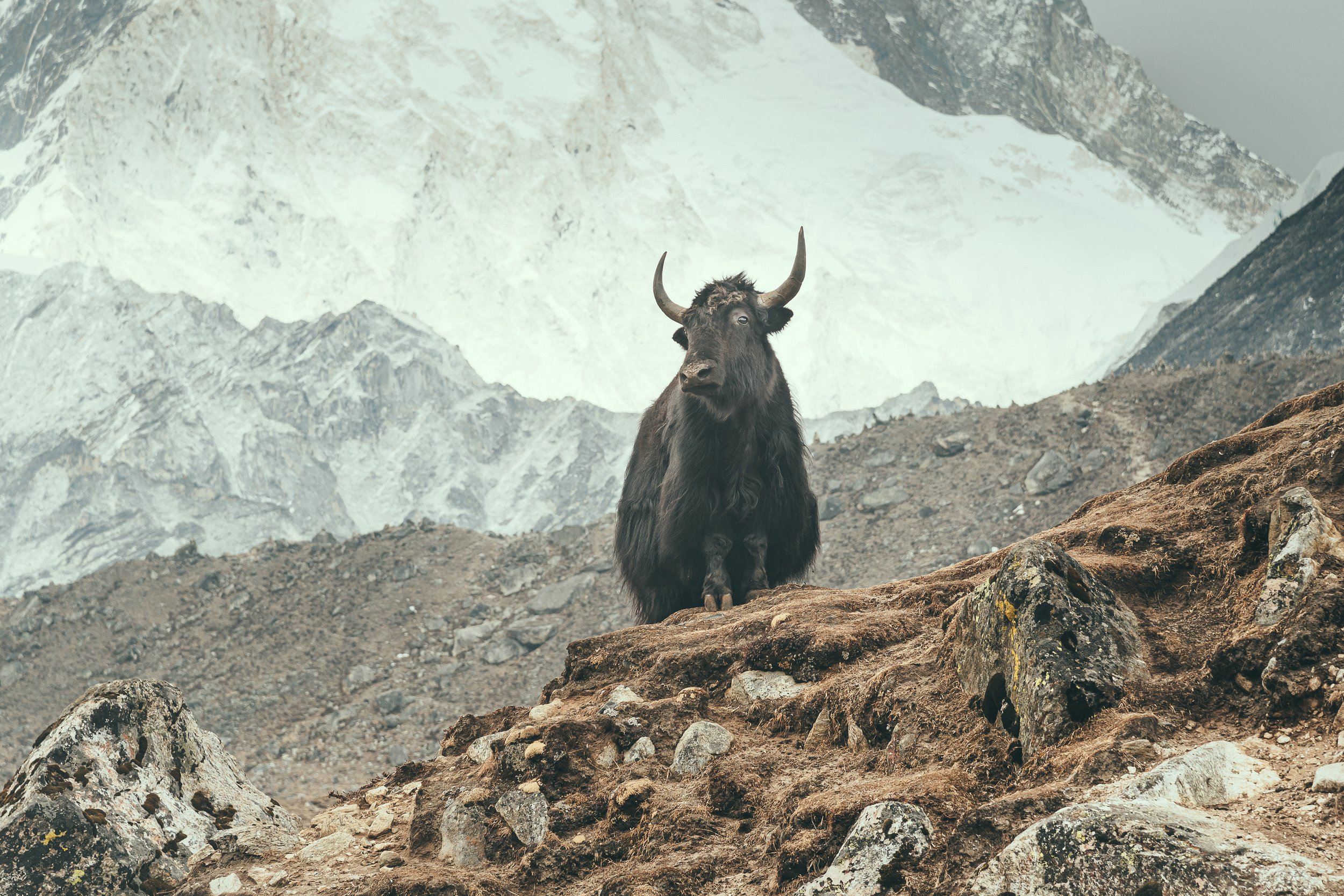The Khumbu, Nepal.
Not to conquer but to climb would lead me to Nepal to explore the landscapes and layers of the Khumbu Valley and into the minds of the mountaineer.
The Himalayan Highway
Climbing out of the comparative chaos of Kathmandu we soar over an unfurling fabric of farms and fields below. While turboprop and turbulence attempt to distract our gaze, the window is awash with Himalayan lines, shapes and shoulders that soon fill the frame.
Dancing Dust
Navigating a path of ever dancing dust, the route winds its way through valleys, villages and vistas, crossing a ribbon of rivers that straddle this corner of the Khumbu. As we settle into a daily routine, an oscillating ladder of rise and fall, we measure our progress by the growing traffic that congregates on this Himalayan highway. While we step ever skyward, drawing breath at every turn, a cacophony of bells, whistles, hoofs and herds rise from below.
Slip. Slide. And slip again.
Navigating our way across the shifting surface we pass silent amongst the shadows. Gravel, grit and rocks slip and slide over an uneven bed of ice. As we rally sore legs and aching limbs we step into Base Camp buoyed by the promise of warm food and a beer. Whether we can stomach the latter at this altitude is another matter, but I’m confident we’ll at least give it a try.
United. Nations.
Everest Basecamp (EBC) lies at 5,200m (17,000 ft) anchored afloat an ever-shifting glacial river at the foot of the Khumbu Icefall. Shrouded by the shoulders of Mount Everest, it’s surrounded by the high alpine Himalayan chain whose peaks such as Nuptse and Pumori stand watch over the 2km ribbon that is this temporary tented town.
A walk amongst the colourful canvas is rewarded with the sights, sounds and smells of international cuisine bringing people together. National flags dutifully bristle but there are no borders here. No pressing political agenda, just people coming together. Over the next week hands are shaken and new friendships form as teams collaborate, coordinate and plan, gravitating ever closer to the infamous same page. Juggling periods of acclimatisation, equipment checks, and marking time honoured traditions such as the Puja, a watchful eye remains on meteorological models.
Because it’s there?
With many whom have loved ones scattered across the globe I wonder why they would willingly invest their blood, sweat, tears and time, and lives, in an attempt to reach the roof of the world. Even now. As we watch and wait my enquiry begins with those that call these lands their own.
Thile
One of several Sherpa on our expedition team, his demeanour epitomises those of his race. Mindful, modest, patient and selfless. Whether guiding on the glacier, hiking up a pass or rustling up a snack he is ever cheerful, resourceful and sincere. Thile’s climbing career began in 2001, initially as a trekking guide. Born and raised in the Himalayas his love of the mountains has permeated his youth, and seeking an active life outside, seized the opportunity to become a high alpine guide when it came.
When I ask Thile to describe his climbing history, like so many of his fellow Sherpa, he speaks of the mountains with reverence and respect. And as with many of the Sherpa, the list of climbs is impressive. Multiple summits of Everest, from the north and from the south, Baruntse, Lhotse, Cho Oyu, Lobouche East and his favourite Ama Dablam. He explains that he thrives on the combination of the technical challenge and the sheer beauty of the mountain; her statuesque presence and almost symmetrical steep lines never fails to impress.
We discuss relationships.
Thile talks of the reward that working with clients brings, taking time to describe the sense of pride he has in those he guides and the satisfaction he feels in helping them to achieve their goals. And moreover the joy of sharing these landscapes with fresh eyes. We also talk about change, and in particular, perception. Despite often sensationalised optics, it seems little in fact has changed. He feels there is a healthy sense of community - and mutual respect - between the climbers and Sherpa, that sees visitor numbers rise year on year. Not only are these visitors seen as the economic lifeblood of this region, but as Thile puts it, the Sherpa view them as “Our second parents.”
Vibeke
Vibeke’s love of the outdoor have led her to make a career from it, as a Major in the Norwegian Army and the lead training officer at their Winter Warfare School.
Vibeke exudes energy, positivity and an evident lust for life. And like several others I’ve met, bore witness to 2015's disaster.
Having just reached Camp 2 the shock of the earthquake caused avalanches to cascade from all sides and precipitate through the icefall. This triggered a huge section of Pumori’s glacier to splinter off and fall with such force that it’s impact would form a explosive wave of rock and granite that would decimate the lives of many within EBC.
After two days Vibi and her team were eventually rescued by helicopter back to EBC. Helping the medical effort as far as she could, she would eventually return to Kathmandu to witness the totality of this national disaster. Without hesitation she took a sabbatical from her career, choosing to stay to see how she could contribute to the relief effort.
What was a one year sabbatical swiftly became two as she lent support to two orphanages, an animal treatment centre and a highly reactive humanitarian volunteer group. And perhaps most astonishing of all a combination of fund raising and public speaking led to support the construction of 6 schools and 2 health posts.
Given her evident values and propensity to help others I ask her why the climb? She describes that rather climbing for her own ends, she now climbs for a sense of the greater good, but with no self expectation of reaching the summit. And as such she feels less pressure, a sense of joy and evokes a sense of fulfilment.
With the snow falling at our feet and the peak of Everest shrouded in mist, I ask her if this year feels different. Recalling the events of two years ago, and the journey since, she continues. “Perspective. I certainly have a different perspective, and I feel blessed to have been able to help so many.”
Jang Bu
Climbing since 1992 Jang Bu has become a Sherpa of considerable notoriety. While this may be owing to his long list of climbs, it is perhaps distinguished by his role in the high alpine rescue of the late Lincoln Hall on Everest at a staggering 8700m. Yet, like so many of his fellow countrymen, his goes about his business with feet firmly planted.
I open with the obvious question, where has he climbed? Gently smiling, and with a soft voice he humbly unravels a remarkable list. White Peak, Island Peak, Mera Peak, Olympic Peak, Pumori (9-10 times), Ama Dablam (9-10 times), Everest South (3 times), Everest North (12 times). Lhotse (2), Baruntse (6), Cho Oyu (7), Shishapangma (2).
As with Thile we talk about relationships, and I ask him to describe how the celebrated bond between a climber and Sherpa forms. While he brings his hands together, slowly interlocking his fingers, he describes the two parties forming a climbing relationship. With trust and respect at the heart of this partnership, they forge a bond, which even if temporary, grows stronger with altitude and is rarely forgotten.
Jang Bu is turning 50. Given his record in the mountains, length of time at altitude and prevalent risk of his work, I ask if he’ll continue. His says nothing, but his eyes say it all.
Yannick
While the buzz within Basecamp continues to build, with larger numbers here than in previous years, Yannick is busy servicing equipment and monitoring the forecast.
For many teams, anywhere above Camp 2 to 3, the use of supplementary oxygen, orally consumed via pressurised cylinders, forms part of the critical path to safely reach the summit. O2 cylinders are counted, checked, and regulators serviced, and over the coming days, are carried through the icefall and strategically dispersed throughout the route by the Sherpa.
But not for Yannick, nor his small team. They are a rare breed. They are purists. The "No O."
Yannick's climbing career began 17 years ago. Drawn to this pastime, by a sense of freedom found, a lack of rules, and the opportunity "To express himself," he followed his passion, and in the hope to make this his profession, relocated to the home of alpinism, the mountaineering mecca of the Alps, Chamonix.
Now a professional IMFGA guide summits include Aconcagua, Peru’s Huandoy, India’s Chaukamba II and Shivling Baghirati I, and a first ascent of China’s Chomo Lonzo. He has forged new routes on Annapurna and Annapurna IV, Kusum Kangguru and Lobuche. Climbs in Tibet have seen him summit Makalu, New Peak and a clutch of first ascents at 7000m, while in Pakistan his record continues, with successful climbs on Broad Peak, Gasherbrum I and a first ascent on Pumari Chhish.
While his record speaks for itself, it is his approach that is rare.
In respecting the traditional ways of alpinism, he and his team mates choose to climb the 8000m peaks without the aid of supplementary oxygen. “Climbing in its most pure form.” And despite a seemingly philosophical sense of expectation on achieving their goal, there is the familiar echo of grit and determination that rings within his words.
Gone, but not forgotten.
Like so many other similar stories this project wasn’t without loss and is dedicated to Roland, Toots and Ueli. May your skies stay forever clear…
Fine Art Prints
A range of very Special Limited Edition Fine Art Prints are available to purchase. These are printed on the finest quality Hahnemühle Photo Rag and available in a range of sizes. Please contact us here to enquire.

